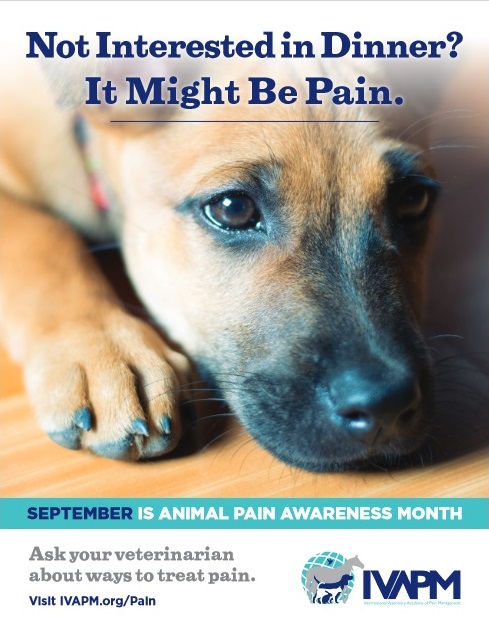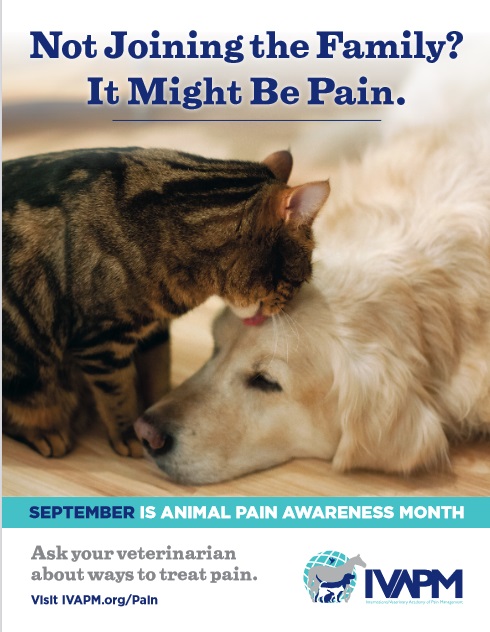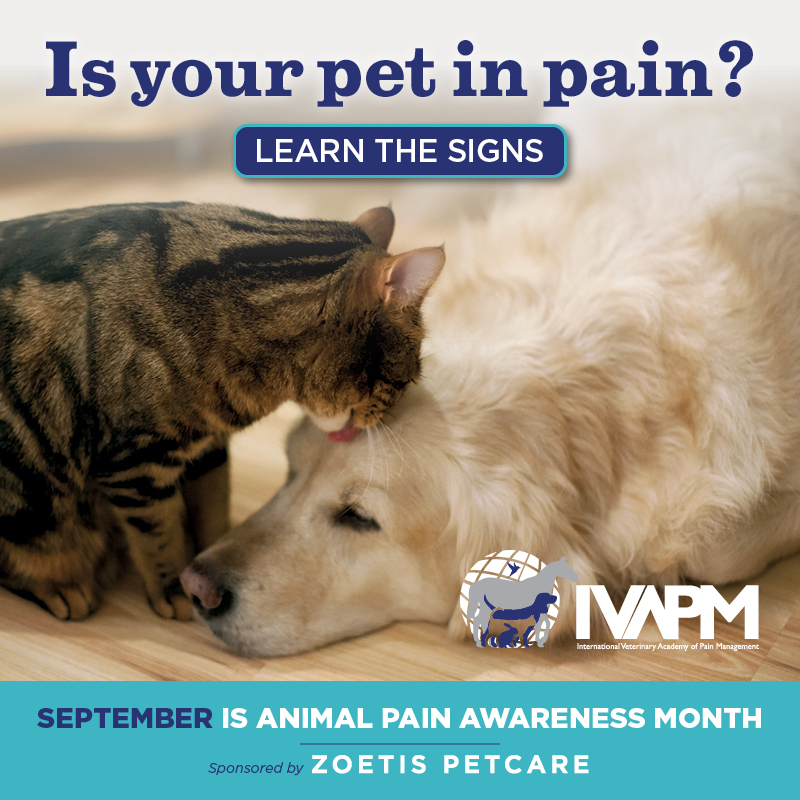The International Veterinary Academy of Pain Management
It’s officially Animal Pain Awareness Month. Each September, we devote the entire month of VetStem blogs to this very important topic. Animal Pain Awareness Month was created by the International Veterinary Academy of Pain Management (IVAPM) and is dedicated to raising awareness to help veterinary professionals and pet owners recognize and manage pain in animals.
Who is IVAPM?

The International Veterinary Academy of Pain Management (IVAPM) was founded in 2001 by a group of veterinarians, including one of VetStem’s earliest users and collaborators, Dr. Jamie Gaynor. The organization evolved over the years and today, is led by an active board of directors to provide veterinary pain management education as well as a pain management certification program.
The IVAPM unites veterinary professionals across all disciplines from around the world to advocate for best practices in the treatment of pain in animals. The organization is committed to encouraging pain management for all animal species through education and advocacy. They also encourage various veterinary organizations to raise public awareness about pain and pain management as it pertains to veterinary patients. IVAPM is the leading forum and educational resource for veterinary professionals and pet owners interested in animal pain prevention, management, and treatment.
IVAPM Board of Directors
The IVAPM has an active board of directors that includes veterinarians and specialized veterinary technicians primarily from the United States. The current President of IVAPM is an experienced VetStem user, Dr. Douglas Stramel. Dr. Stramel has been utilizing VetStem Cell Therapy since early 2008. Stem cells have the ability to directly modulate pain, which we will discuss in a blog later this month.
IVAPM Pain Management Forum
One of the primary goals of IVAPM is to educate the veterinary community to recognize and treat pain in all species of animals. IVAPM provides continuing education on a variety of topics around the world. As mentioned above, they also provide the only interdisciplinary pain management certification program for veterinary professionals.
In addition to these efforts, IVAPM launched the very first Pain Management Forum earlier this year. VetStem sponsored a dry lab with Dr. Douglas Stramel in which he discussed VetStem Cell Therapy as one of several pain management modalities he employs in his practice.
Resources for Pet Owners
The IVAPM does not solely focus on educating veterinary professionals. Pet owners play a key role in both recognizing and managing their pet’s pain. Thus, the IVAPM has several resources for pet owners as well. Through their website, pet owners can search for Certified Veterinary Pain Practitioners and also find various resources to help determine if a pet is in pain.
Stay tuned for more Pain Awareness themed blogs all month long!








